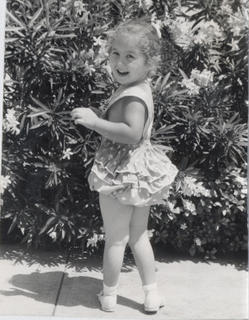Sunday, August 05, 2007
Mad Dogs and Englishmen: In Search of Wayang Beber (1987)

MAD DOGS AND ENGLISHMEN: IN SEARCH OF WAYANG BEBER
BY GEORGINA
“Only mad dogs and Englishmen venture forth beneath the noonday sun.” An apt corollary to “the sun never sets on the
In 1987, my ex and I traveled to
Days in
Upon our return to Yogya, we said goodbye to the Hotel Garuda and its austere, yet beckoning, Dutch Colonial ambiance. Two more destinations awaited us on the
I distinctly remember Solo’s small, hometown feel. This was due, in large part, to the friendly, albeit reserved, nature of the city’s inhabitants. They know they are the most refined Javanese. Instead of lording it over their guests (tourists such as ourselves), they graciously shared their customs and culture with us. They are fiercely proud of their heritage and enviable position. The Solonese even employ two forms of dialect, High and Low Javanese, in their daily speech as a means of distinguishing among the existing social classes.
Their proud, yet gentle demeanor in the way we were greeted at the Kusuma Sahid Prince Hotel. The way the tour guide led us through the kraton, or palace (since the royal family remained loyal to the Dutch, the current raja [prince] does not wield any real power within the Indonesian government). Even the way we were given directions. Above all else, the residents of Solo are imbued with a politeness that goes hand in hand with their refinement. Their demeanor commands—outright demands—respect.
The Solonese nature is reflected in the city itself. As in many cities in both the East and the West, in Solo the old and the new manage to peacefully coexist side by side. Wide avenues with bustling traffic, including British-style double-decker buses, are only paces away from narrow alleys which can be accessed only by pedestrians and those who ride/drive two-wheeled vehicles. A modern shopping mall might be found juxtaposed to a traditional pasar (market). One can have a Dutch breakfast, a Chinese lunch, and the evening meal at one of the many street warungs (food stalls), where the chef prepares the food to order and then one dines sitting on little benches/stools beneath kerosene lamps. The energetic, bustling warungs are, however, not incompatible with the city’s underlying stateliness. Solo, ever in sync with its inhabitants, pulsates with a rhythm all its own.
We were scheduled to depart for
“Wayang Beber – at Jl. (Jl., or Jalan, means “Street”) Sawo 8 no 162, Perumnas Palur made by craftsman Subanono” my ex had listed as a shopping selection in his detailed, carefully wrought itinerary. Back at our hotel, we proceeded to bargain with a becak driver for our ride to find the wayang beber.
The becak is the Indonesian version of the Chinese rickshaw. The driver perches atop an elevated bicycle situated at the back of the vehicle. With sheer pedal-power, he transports anywhere from one to (I’ve seen) four passengers, who sit on a (preferably) cushioned, canopied bench-seat in front. A jolting journey: every time I rode one of these things, I was sure I was going to fall off!
Our driver—a bronzed, wizened fellow who was probably in his forties but looked sixty—looked at the address, which was presumed to be only about three kilometers away. We settled on six thousand Rp. (rupiah)—around three US dollars—round trip. We got underway between eleven a.m. and noon.
The closer we got to the city limits, the more we began to wonder if our driver knew where he was going. He was seriously huffing and puffing. The streets began to wind and slope more and more. The driver finally beckoned to my ex that he should walk alongside for a little while. I was really concerned about the man’s state of health by this point. Rivulets of sweat were streaming down his entire body. He appeared to be more and more weakened with each step.
I suggested that I walk. No, under no circumstances would he permit me, a woman, to walk! The becak’s canopy offered me shade only down to my knees. Of course, I was wearing shorts. Consequently, the blazing sun proceeded to bake my knees (especially) and legs a bright ruby red. My poor ex fared even worse—a freshly boiled
It was around one-thirty p.m. We had traveled much more than three kilometers (actually, more like twelve to fifteen). Our driver finally stopped. In the middle of a little side street with an open sewer running parallel to the line of dwellings (we were now in the “suburbs”), it appeared we had finally reached our destination. Upon enquiry, we discovered that the craftsman Subanono no longer lived in Solo, or anywhere else on Java, for that matter: he had moved to
Disappointed, exhausted, hungry, parched, sun-scarred, and, worst of all, empty-handed, we had no choice but to return to our hotel…and as quickly as possible if we were going to make our flight! Our poor driver must have felt worse than us at least a hundredfold. Surprisingly—or, perhaps, not so—the knowledge that his ordeal with us was almost at an end enabled him to return us to the Kusuma Sahid Prince with amazing alacrity. He had us back at the hotel between two-thirty and three p.m. He rightfully expected us to double his fare for all of his pains. My ex parsimoniously settled on ten thousand Rp. (around five US dollars). The man left us ruffled and disgruntled.
We departed for
It just goes to show you don’t have to be an Englishman to be mad.
2003 postscript: Last October’s bombings in
Copyright 2003, 1999, 1995 1525 words All Rights Reserved
What is it with me and dogs?
